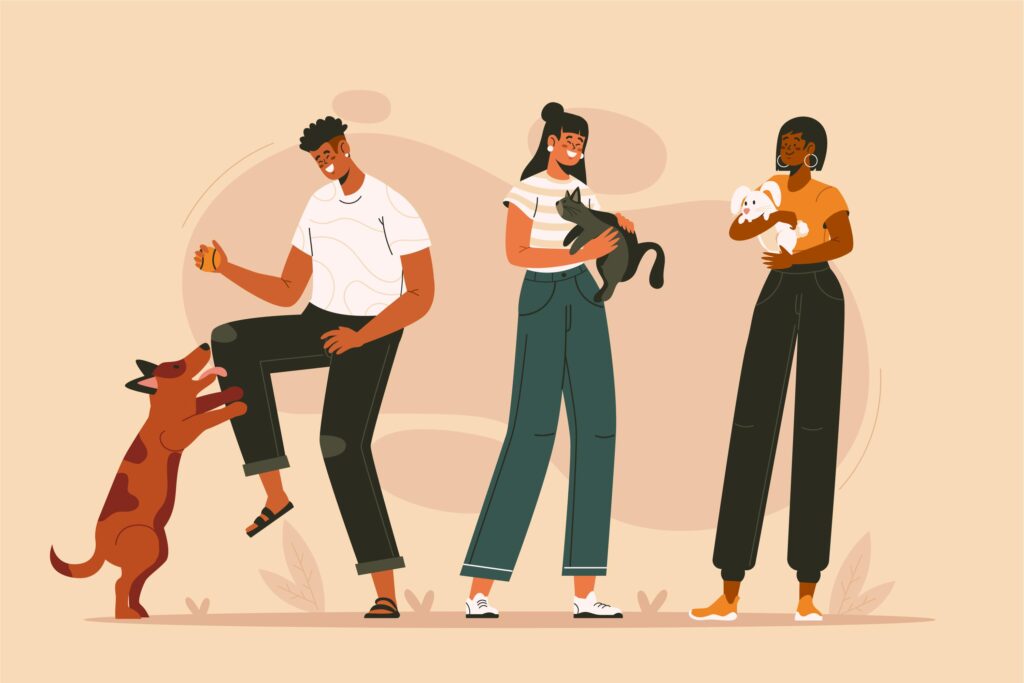Dog Body Language Explained: signs and meanings

Dogs, our beloved canine companions, are masters of communication, though they primarily “speak” through body language rather than words.
Understanding their subtle cues and signals is essential for building a stronger bond, improving training effectiveness, and ensuring a safe and harmonious relationship.
This guide will delve into the intricacies of dog body language, providing you with the knowledge to interpret their messages accurately and respond appropriately.
The Language of Dogs
While vocalizations like barks, growls, and whines play a role, dogs rely heavily on a complex system of body language to convey their emotions, intentions, and needs.
This nonverbal communication involves a combination of facial expressions, body posture, tail movements, and subtle signals that can be easily missed if we’re not paying close attention.
By learning to “read” your dog’s body language, you can gain valuable insights into their state of mind, anticipate their actions, and prevent misunderstandings that could lead to behavioral issues or even aggression.
Key Components of Dog Body Language
To become fluent in “dog speak,” it’s crucial to understand the key components of their body language:
Facial Expressions:
A dog’s face can reveal a wealth of information about their emotional state.
Eyes:
- Direct gaze: Can be a sign of confidence, challenge, or aggression.
- Soft gaze: Indicates relaxation, affection, or a desire to avoid confrontation.
- Whale eye: When the whites of the eyes are visible, it often signifies stress, anxiety, or fear.
Mouth:
- Relaxed: Mouth is closed or slightly open, with no tension.
- Panting: Normal in warm weather or after exercise, but excessive panting can indicate stress or overheating.
- Lip licking: Often a sign of stress, anxiety, or appeasement.
- Teeth baring: A clear warning sign of aggression, but sometimes dogs may “smile” (a submissive grin). It’s important to consider the context.
Ears:
- Forward: Alertness, interest, or assertiveness.
- Back: Fear, anxiety, or submission.
- Flattened: Extreme fear or submission.

Body Posture:
A dog’s overall body posture provides a crucial context for understanding their emotional state.
- Relaxed: Loose muscles, weight evenly distributed, head held comfortably.
- Playful: Play bow (front end lowered, rear end raised), bouncing, energetic movements.
- Alert: Stiff body, raised head, focused gaze, ears forward.
- Fearful/Anxious: Tucked tail, lowered body, trembling, avoiding eye contact.
- Aggressive: Stiff body, raised hackles (hair on the back), direct eye contact, bared teeth, growling.
- Submissive: Lowered body, tail tucked, avoiding eye contact, possibly rolling over.
Tail Movements
A dog’s tail is a powerful communication tool, but it’s essential to consider the entire context.
- Height:
High: Assertiveness or excitement.
Neutral: Relaxed.
Low or tucked: Fear, anxiety, or submission.
2. Wagging Speed:
Fast wag: Excitement or nervousness.
Slow wag: Uncertainty or mild interest.
Direction of Wag:
To the right (from the dog’s perspective): Often associated with positive emotions.
To the left (from the dog’s perspective): Can be associated with negative emotions.
Vocalizations:

Dogs use a variety of vocalizations to communicate, each with its own meaning.
- Barking: Can indicate excitement, alarm, boredom, or a need for attention. Different types of barks have different meanings.
- Growling: A warning sign of aggression or fear. It’s important to heed a growl and give the dog space.
- Whining: Often expresses attention-seeking, anxiety, or pain.
- Howling: Can be a form of communication with other dogs or a way to express loneliness.
Common Dog Body Signals and Their Meanings
A. Relaxed and Comfortable Signals: A relaxed dog is a happy dog.
Loose body: Muscles are relaxed, and the dog may appear “wiggly.”
Soft eyes: Eyes are relaxed, with no intense stare.
Relaxed mouth: Mouth is closed or slightly open, with no tension.
Normal tail carriage: Tail is held in a natural position, not too high or too low.
B. Playful Signals: Play is an important part of a dog’s social interaction.
Play bow: The classic “I want to play” signal, with the front end lowered and the rear end raised.
Bouncing: Energetic and bouncy movements.
Open mouth with relaxed tongue: A relaxed, happy expression.
C. Stress and Anxiety Signals: Recognizing stress signals early can help prevent escalation.
Lip licking: Licking the lips when no food is present.
Yawning: Yawning when not tired.
Whale eye: Showing the whites of the eyes.
Tucked tail: Indicates fear or submission.
Trembling: Can be a sign of fear or anxiety.
Pacing: Restless and repetitive movements.
D. Fear and Submission Signals: A fearful or submissive dog is trying to avoid confrontation.
Tucked tail: Held tightly between the legs.
Flattened ears: Pressed against the head.
Avoiding eye contact: Looking away.
Rolling over: Exposing the belly (a sign of submission, but not always an invitation for a belly rub).
E. Aggression Signals: Recognizing aggression signals is crucial for safety.
Stiff body: Rigid and tense muscles.
Direct eye contact: An intense stare.
Raised hackles: Hair standing up on the back.
Bared teeth: Showing teeth (other than during a submissive grin).
Growling: A clear warning signal.
By taking the time to learn and understand dog body language, you unlock a deeper level of communication with your canine companion. This leads to:
A stronger bond: You’ll feel more connected to your dog and better able to understand their needs.
Improved training: You’ll be able to communicate more effectively during training sessions.
Increased safety: You’ll be better equipped to prevent behavioral problems and avoid potentially dangerous situations.
Continue to observe, learn, and grow your understanding of your dog’s language. The effort you invest will be repaid with a richer, more fulfilling relationship with your beloved friend.

